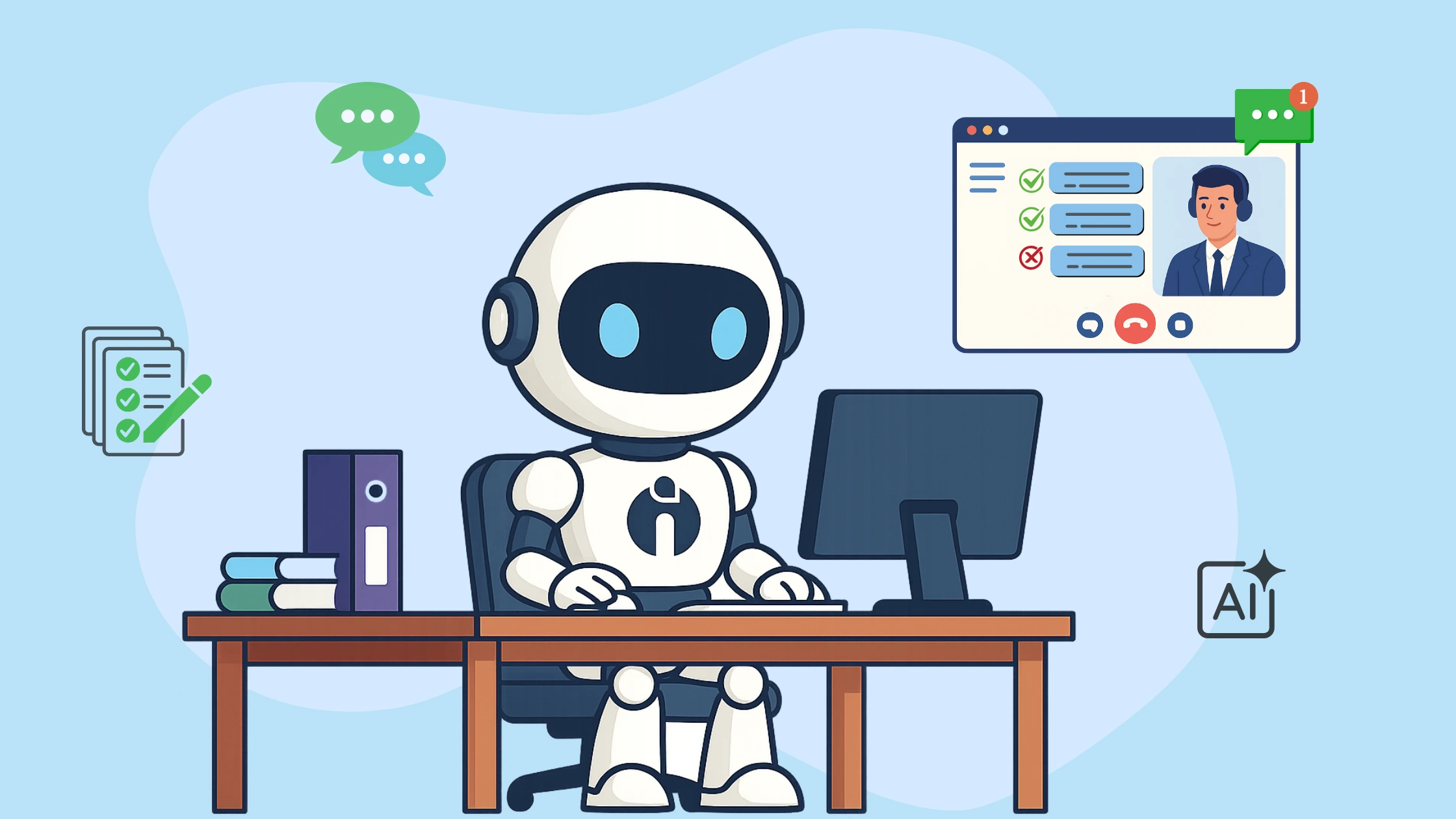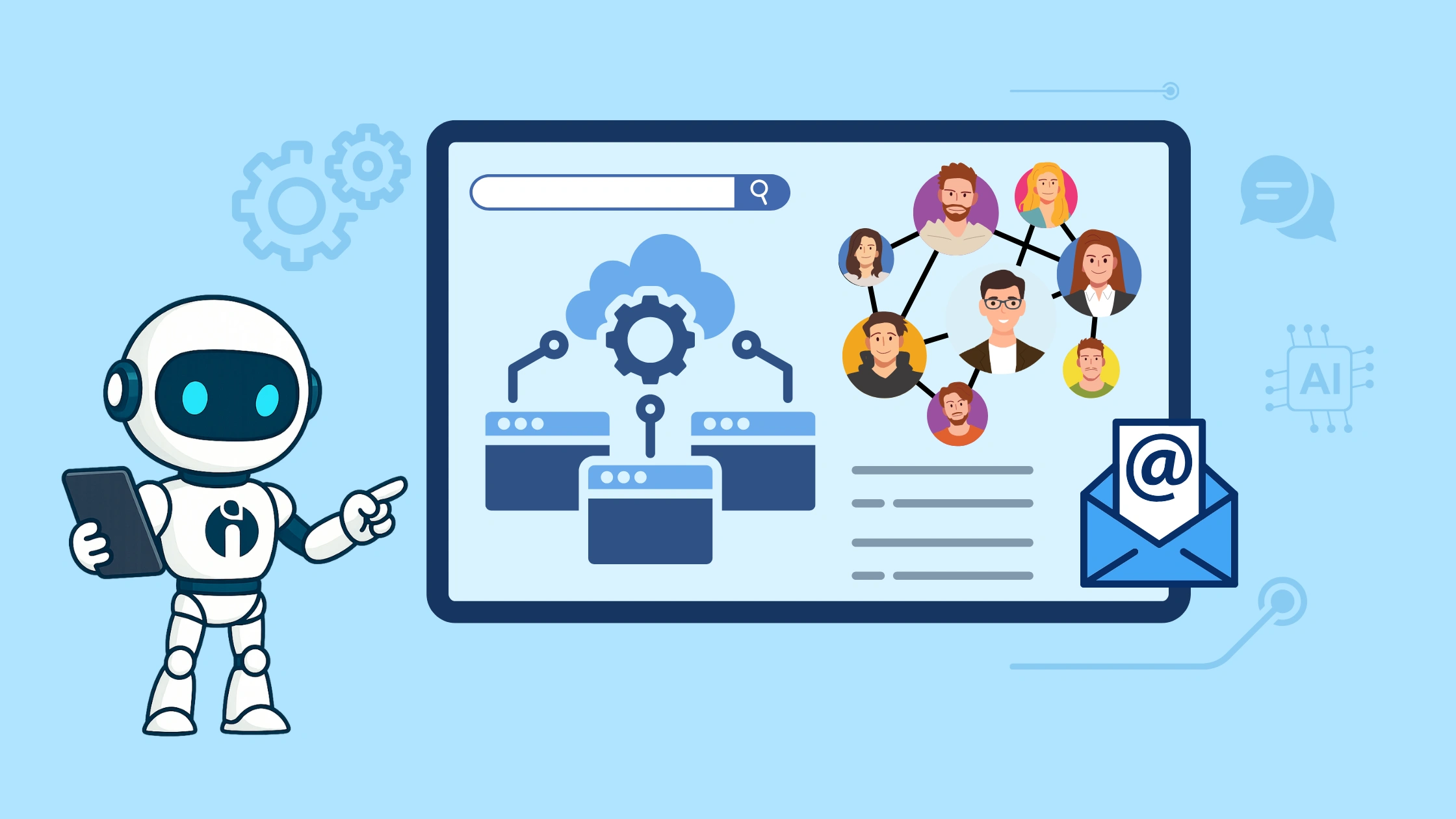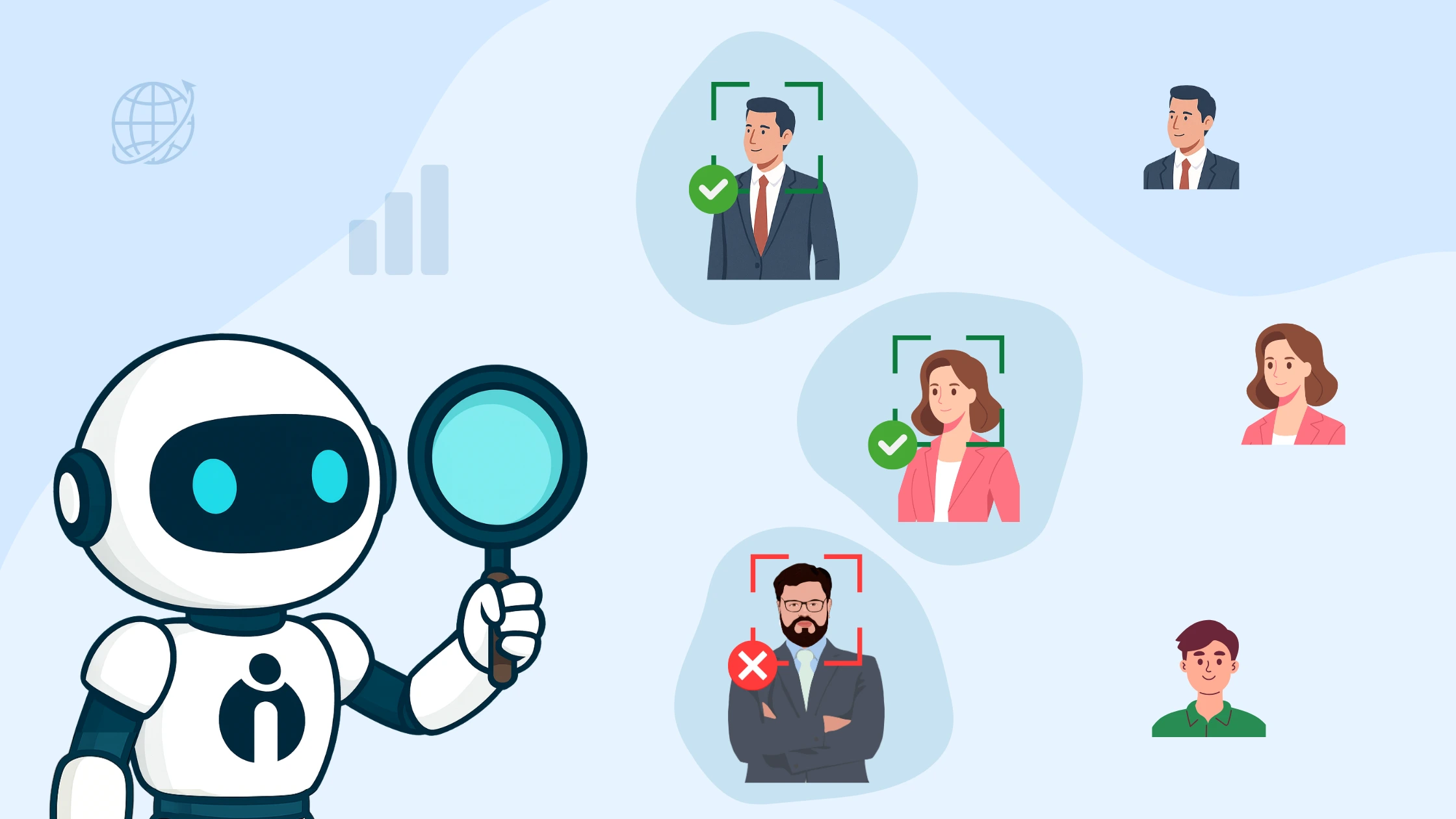TL;DR
- Talent acquisition is a strategic process to find and retain the best candidates aligned with long-term business goals.
- The process includes sourcing, attracting, interviewing, background checks, selection, and onboarding.
- Challenges include talent shortages, competitive markets, changing skill requirements, and managing acquisition costs.
- Effective strategies involve aligning with business goals, marketing campaigns, outreach expansion, strong employer branding, and positive candidate experiences.
- Technology tools such as ATS, AI, video interviews, onboarding solutions, and analytics play a crucial role in streamlining acquisition.
- Talent acquisition differs from recruitment by focusing on a proactive, long-term approach rather than filling immediate vacancies.
- Successful talent acquisition team members require strong soft skills, sales aptitude, and an ability to think strategically.
You must be wondering why is talent acquisition important, right? Well, the answer lies in the question itself!
Nowadays, many global organisations are facing the resulting effect of ‘the great resignation’, and it is becoming extremely difficult for them to retain top talent with a rise of higher wages, competitive benefits and remote work opportunities.
Currently, the market is candidate-driven, and there is fierce competition to acquire the best candidates. Also, It is true that without skilled talent, the company will struggle with less productivity, wrong decision making and uninspired staff.
So, to resolve these challenges, employers and hiring managers are seeking proven strategies to stay competitive and acquire and retain highly-skilled applicants.
Well, talent acquisition has the answer to overcome the obstacles hiring professionals and recruiting agencies are facing.
Talent acquisition is the strategic approach for hiring managers and recruiters to analyse their requirements, long-term company goals, and the context of business objectives and, based on that, hire talent that is a perfect fit for the role and help the organisation to achieve on the vision it is aiming for.
Let’s dive deep and learn the art of talent acquisition!!
Talent Acquisition Meaning
The definition of talent acquisition is quite confusing, but let's make it easy for you.
Talent acquisition (TA) represents efforts to find the most compatible candidate for the job position. It usually falls under the human resources (HR) field or umbrella, and the process contains five steps.
The principal phases of talent acquisition are sourcing, attracting, interviewing, recruiting, and conducting employee onboarding.
The talent acquisition process is not merely about hiring candidates that are a perfect fit for the open positions. But it is also about creating a possible career path for potential employees so they can see their growth and development opportunities in the organisation and don’t leave the company.
There is a team of skilled employees behind the talent acquisition plan, and they combine their knowledge and expertise to identify and acquire talent whose abilities and vision align with the organisational needs.
Besides finding the best match, their goals are also to identify gaps within a company and fill those vacancies while being economical with time and finances.
Vital elements of talent acquisition are creating a sourcing strategy, handling candidate assessment, and taking care of recruiting compliance and standards.
Thus, talent acquisition team members need to be aware of employer branding practices and have insights into corporate recruiting initiatives.
But how does talent acquisition work? Let’s see!!
Talent Acquisition Steps: How Does It Work?
If the difference between talent acquisition and job recruiting lies within the strategic side, what makes its process unique? The steps are not drastically different compared to recruiting, and they can last for several months.
Here are the stages of the talent acquisition process.
Step 1: Implement candidate sourcing strategy
The process starts with writing a compelling job advert and detecting all the places where specialists in a particular industry gather.
Hence, the talent acquisition team must leverage the benefits of social media recruitment must leverage social media recruitment strategy to target suitable social networks, industry conferences, events, communities, and forums. That's where they can reach top talent and grow connections.
Also, talent acquisition specialists and recruiters need to use their networks and employee referrals to find suitable talent.
By doing so, they are generating a talent pool and robust candidate pipeline of top-notch candidates.
Step 2: Attracting potential talent
Establishing a strong employer brand and positive company culture and promoting it are the main components of attraction and retention.
Make current employees your brand ambassador and let them promote your work culture by posting videos and images on social media platforms where they are talking about fruitful benefits and learning opportunities they got after joining the firm.
Also, talent acquisition teams need to ensure an engaging candidate experience and even keep in touch with those who might not be fit at the moment but can be perfect in the future.
Step 3: Skill assessment & Interview process
Skills assessments are specifically designed to evaluate the skills and experience of individuals. It reduces hiring biases in the talent acquisition process and measures the potential of the candidates. Utilizing comprehensive data skills assessments can provide deeper insights into a candidate's technical capabilities, ensuring a more precise match for the role.
Hence, It is essential in candidate screening to determine prerequisite skills and qualities, but also the principal indicators of a successful performance.
The pre-employment assessment stage helps you remove the application of unsuitable candidates from the very beginning.
The next step is to build interview questions around these insights or use alternative tools of candidate assessment, such as a skills test or a demonstrated pitch.
Afterwards, recruiters can schedule interviews who pass the assessment tests and are qualified for the interview stage.
Step 4: Background & references checking
A reference check is a process of verifying the history of the candidate by contacting his/her previous employer and colleagues.
Although many recruiters skip this step, however, it can be incredibly helpful to check whether there are any concerns or novel impressions.
But always remember, before conducting the process of reference checks, list out all your needed questions and which answer you are seeking.
Step 5: Final selection
Recruiters and talent acquisitions teams utilise features like candidate scorecards in Applicant Tracking System (ATS) and internal grading system to assess the overall performance and progress a candidate has made during the talent acquisition process.
The essential step is to evaluate the candidates and select the best one.
Also, many use tracking or talent acquisition software for this phase to alleviate and automate the process of time-consuming activities.
Step 6: Hiring and onboarding
These two practices are often done by someone else, but they are the climax of acquiring the best candidates.
It's crucial to provide new employees with seamless onboarding because that can have a direct effect on retention rates. Moreover, understanding the pre-boarding benefits can further enhance the overall employee experience, ensuring a smoother transition for new hires.
Talent Acquisition Challenges
Finding and hiring the right candidate for the open role is extremely difficult in today’s competitive and talent-driven market.
Also, an effective and best-in-class talent acquisition function is hard to achieve for even the most experienced experts. Acquiring and retaining talented individuals is a huge obstacle talent acquisition specialists, and HRs are facing.
It gets even harder with tight budgets and fierce competition in every segment. Here are some common talent acquisition challenges TA specialists face:
-
Talent shortage
-
Competitive hiring market
-
Constantly changing skill requirements
-
Managing talent acquisition costs
-
Engaging with the right talent
-
Creating a strong employer branding
-
Lower retention rates
Talent Acquisition Strategy for Hiring Professionals
We have talked about what is talent acquisition and its talent acquisition stages. Now it's time to know different talent acquisition strategies that help corporate organisations and staffing agencies to grow faster.
Strategies of talent acquisition are an organisation's customised approach to finding, assessing, and hiring suitable candidates to achieve the company’s long-term goals.
Every activity that has a goal to obtain the best results demands a good strategy. Here are the proven talent acquisition strategies for talent acquisition teams.
1. Align with your business goals
It's crucial to consider and determine business goals for the next five (or even one) years and to tailor the talent acquisition strategy to those requirements.
For example, you are planning to create and launch a new software product in the market. Then, in that case, your Human Resources department needs to put its efforts into attracting talented individuals who have experience in coding and development.
Not only determine the goals but also measure the outcomes, and according to the result, you should fix the upcoming goals.
2. Run Killer marketing campaigns
It is not possible to create any kind of marketing campaign without relevant data and insights about the positive points of your organisation and promoting them to attract a wider audience of potential candidates.
Hence, a talent acquisition marketing campaign must be given the same amount of importance as any of your other marketing campaigns.
Promotion and recruitment marketing are inevitable elements of any hiring process, and talent acquisition is no different.
Therefore, talent acquisition teams need to use their data and insights to interact with the candidates and present their company culture to attract job applicants.
3. Execute outreach expansion strategy
Recruiters need to determine where they can find their perfect candidates and identify diverse methods of outreach.
For example, they will not get the best developers where they get the best sales executives. They will get different talents on different channels. There are specialised job boards, right-fit networking events, and academic programs.
Hence, it is crucial to expand the sourcing & recruitment channels and job advertisement platforms.
4. Build a strong employer brand
How an organisation presents its unique selling proposition, and brand will have a great impact on reaching and retaining remarkable candidates.
Employer branding is the organisation's goodwill in the market as an employer. This influences and creates a great impact on job seekers and also on stakeholders and employees.
In this fast phase, if you want to achieve terrified talent acquisition growth and want to attract A-grade candidates, then prioritise the employer branding.
5. Provide an excellent candidate experience
Creating a positive candidate experience is a crucial parameter in attracting diverse talent. Hence, it is essential for talent acquisition teams to make sure that candidates feel good about the company and your talent acquisition process.
It will help to build and promote strong employer brand candidates fall in love with and influence the decision of the applicants whether they should accept a job offer or not.
There are many best practices done by talent acquisition professionals to raise the bar of applicant experience.
The recruitment team has to write a clear job description, follow up in a timely manner with the candidates, communicate and update at each stage of the recruitment process, and be open to giving and receiving feedback to improve the hiring process.
6. Increase the budget for the DEI strategy
According to Dan Schawbel, managing partner at a New York City-based HR research and advisory firm and a bestselling author said that "This year, 70% of job seekers said they want to work for a company that demonstrates a commitment to diversity and inclusion."
So, one thing is clear diversity, equality, and inclusion is the most critical parameters for every employer nowadays.
Talent acquisition recruiters can utilise various sourcing channels to build diverse talent pipelines and implement structured interviews to assess each candidate with the same questions and criteria.
This way, hiring bias will be reduced from the talent recruitment process, and only qualified candidates get the job. So, it is a win-win situation for both employer and employee.
7. Set a fruitful employee referral program
Indeed there is no doubt that an employee referral program is a superior talent acquisition tool as it is a cheaper and faster way to acquire skilled employees in your organisation.
HR and talent recruitment professionals can implement the following steps to design a successful employee referral program.
-
Define the strategic objectives and anticipated results of the referral program.
-
Create the process and rules of participation.
-
Offer rewards and incentives that will encourage employees to participate.
-
Add features to increase referrals.
8. Attend job fairs and networking events
It is essential for a talent acquisition strategy to plan to promote yourself at career fairs and networking events and attract broad talent.
The talent acquisition teams need to order and prepare marketing materials that they require to advertise at the event.
Also, during the event, the team have to speak to as many candidates as they can, keep interviews within a particular timeframe, jot down notes during the interviews and, most importantly, let applicants know of the next steps.
9. Utilise recruiting tools and technology
With the rapid development of technology, there are plenty of recruitment technology and tools available that will ease your hiring process and enable you to provide a better candidate experience.
For example, you can purchase Talent Acquisition Software which handles all the tasks of the talent acquisition process by providing highly-scalable features that will help you to effectively post job advertising, candidate sourcing, scheduling and conducting interviews to onboard the most suitable candidate for growth.
These talent acquisition tools are best-fit for small & mid-size recruiting agencies that hire talent all the time.
10. Offer learning and development opportunities
The talent acquisition process and learning & development opportunities go hand-in-hand as they speed up the effectiveness of the process of acquiring talent.
It is important for an organisation to focus on various areas of soft-skill training, such as core skill development, microlearning and mentoring.
Also, they must see the long-term benefits of creating learning opportunities for current employees by providing them with personal training, boot camps and core strengthening of real-world skills.
This way, employees will see personal growth and career prosperity at the organisation and stay there for a long time.
What is Talent Acquisition in HR?
Talent acquisition and Human Resource Management are often used interchangeably. However, there is a big difference in the tasks they conducted.
Talent acquisition professionals and HR managers both contribute to making hiring decisions for an organisation.
They aim to hire the most qualified candidates, conduct interviews and extend offer letters to those who are ideal to fill the open position.
However, there is a difference between each division. Talent acquisition monitors the pre-onboarding stage, whereas the HR department manages and handles the post-onboarding stage after the recruiting and hiring process has been completed.
Here is the daily responsibility of talent acquisition teams and the HR department.
Duties of talent acquisition teams
-
Prepare a clear-cut job description
-
Verifying the job referrals
-
Connect with previous candidates
-
Discussing the material required for success in the role
-
Duties for managers in the HR department
-
Designing career paths
-
Organising training programs
-
Decide benefits and compensation packages
-
Contacting recently hired employees
-
Building reward systems
-
Conducting exit interviews
Talent Acquisition VS Recruitment: What’s the Difference?
Talent acquisition and recruitment are somewhat related. However, they both are a distinct concept that falls under HR and staffing.
But, most people outside HR departments find it challenging to draw a clear difference between talent acquisition and recruitment.
After all, they have the same goal - to place people in open vacancies. Despite the overlaps, the difference is sharper than people usually assume.
Talent Acquisition is a proactive and strategic approach to hiring top candidates for an organisation. Whereas, Recruitment is a reactive and more transactional process focused on filling immediate job vacancies.
Talent acquisition aims to create strong employer branding, relationship building, and proactive sourcing. It considers future talent requirements and succession planning to achieve the long-term goals of the company.
On the other hand, recruitment is a short-term approach to fill immediate job openings and hiring requirements within the organisation.
Hiring managers focus on addressing the short-term needs of the organisation, and they fill open positions. That means that the goal of job recruiting is temporary work requirements. On the other side, talent acquisition teams concentrate on long-term HR planning and talent acquisition best practices.
For that, they have to develop and use an ongoing strategy that allows them to identify talents that can have a crucial role in the future success of the organisation.
Therefore, they determine specialists, leaders, and CEOs that require extensive and specialised training, which is a high-responsibility task.
What Makes a Good Member of the Talent Acquisition Team?
The team mostly relies on recruiters and their expertise, but not everyone can be a well-performing talent acquisition member.
The recruiters participating in the talent acquisition process must have exquisite soft skills and be people.
They should be comfortable with persons of different backgrounds to be able to recognise marvellous and matching talents. Hence, they should nourish and maintain relationships, and those across the workplace and different industries matter the most.
People who find this role pleasant are also those who can think out of the box and see the big picture. That ability allows them to comprehend what their organisation needs on all levels.
They are knowledgeable about the methods they need to reach those insights, and they know how to perform them. By identifying the company's needs, they know what to seek and how to answer those requirements.
Although it's not a requirement, it's recommendable or at least helpful to have a background in sales because their ultimate objective is to sell jobs to the best talents. Besides, they also need to sell those job applicants to the stakeholders.
The Role of Technology in Effective Talent Acquisition
Where is in today’s world, every small thing incomplete without technology, How can talent acquisition stay behind curve. Talent acquisition has transformed after technology comes from how organisations attract, screen, and hire candidates.
Here are some key technologies that have had a significant impact on the talent acquisition process:
1. Applicant Tracking Systems (ATS)
You can manage your entire recruitment cycle, from posting job ads to managing applications and tracking candidates through various stages of the recruitment process. ATS automates many administrative tasks and provides a centralised platform for managing recruitment data. It’s like having ultimate weapon.
2. Recruitment CRM Software
Maintain all your engagement with potential candidates with recruiting CRM. It helps you to foster and cultivate relationships with passive candidates. So, you can creates a talent pool for future openings.
3. AI and Automation
When it comes to technology, you can’t turn a blind eye to AI and Automation in recruitment. They are one of the most powerful tools in today’s world. They sort through resumes quickly and accurately. They can match jobs with candidates. It also automates routine tasks, like screening resumes and scheduling interviews, so you can focus on the candidates themselves.
4. Video Interviewing Tools
No need to meet in person anymore; you can conduct interviews online and may include features like scheduling, recording, and even analysing candidates' expressions and word choices. These tools have become especially popular as remote work has increased.
5. Onboarding Solutions
Digital onboarding solutions help new hires complete necessary paperwork, learn about the company, and integrate into their new roles remotely or in person. It ensures a smooth transition and can improve new hire retention.
6. Analytics Tools
Data analytics tools in talent acquisition help measure the effectiveness of recruitment strategies and optimise processes based on real-time data. That’s how well your strategies worked, and these insights can lead to better decision-making.
By using these technologies, organisations can enhance their recruitment efforts, reduce time-to-hire, and improve the overall candidate and recruiter experience.
Final Thought on Talent Acquisition
Indeed talent acquisition is one of the crucial elements of every business. The initial step that you should follow before implementing talent acquisition strategies is understanding talent acquisition.
Also, while handling the process of talent acquisition in-house, the human resource department is a core driver in managing the whole approach. Thus, they should focus on the outcomes of the process by examining each phase of TA.
Happy Acquiring the Best Talent!!
FAQs
1. What’s the difference between talent acquisition and talent management?
Talent acquisition is the practice of talent acquisition specialists to identify and hire people who are fit for the open position and helps an organisation to achieve long-term goals. Whereas talent management is a function of the HR department to develop and retain talent by providing them with learning and growth opportunities.
Both processes go hand-in-hand and are essential to increase the retention rate and promote positive work culture. For instance, if you find and attract a potential candidate but do not spend time in their development, then you will not be able to unleash their potential and retain them longer.
2. What are talent acquisition skills?
Talent acquisition skills refer to the skills and abilities of talent acquisition professionals to quickly find, attract and acquire suitable candidates in the organisation.
It requires some key skills, including relationship building, effective communication, adaptability, data analysis, tech-savviness, interviewing and negotiation skills.
3. How do I apply a Talent Acquisition strategy?
First of all, plan your talent acquisition strategy around the long-term goals of your organisation.
If you want to acquire people who are adaptable to the latest tech, and have fresh perspectives and ideas, then develop internship programs for entry-level employees and new graduates.
Implement blind hiring and structured interviews if you want to hire a qualified and diverse workforce.
You must remember that nurturing positive relationships with candidates is a long-term strategy and take time.
Also, the new hires play a crucial role in your company’s future, so start sourcing by participating in career fairs and networking events which are relevant and give you a chance to network with active and passive candidates.


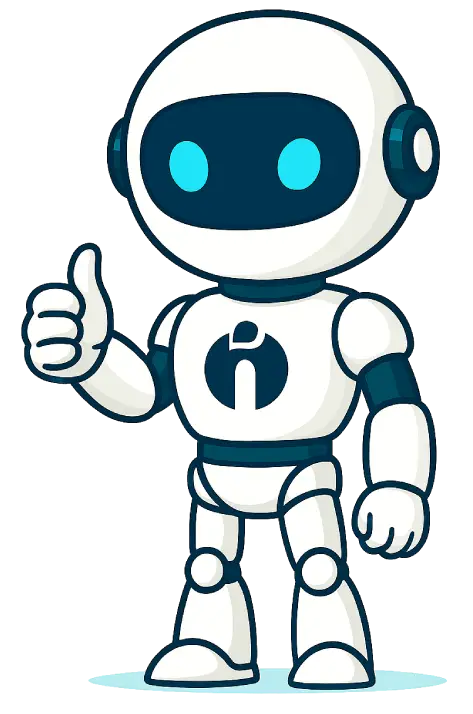



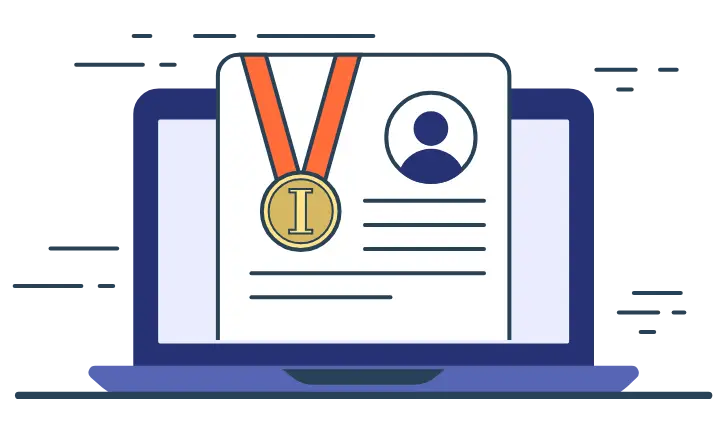

.webp)


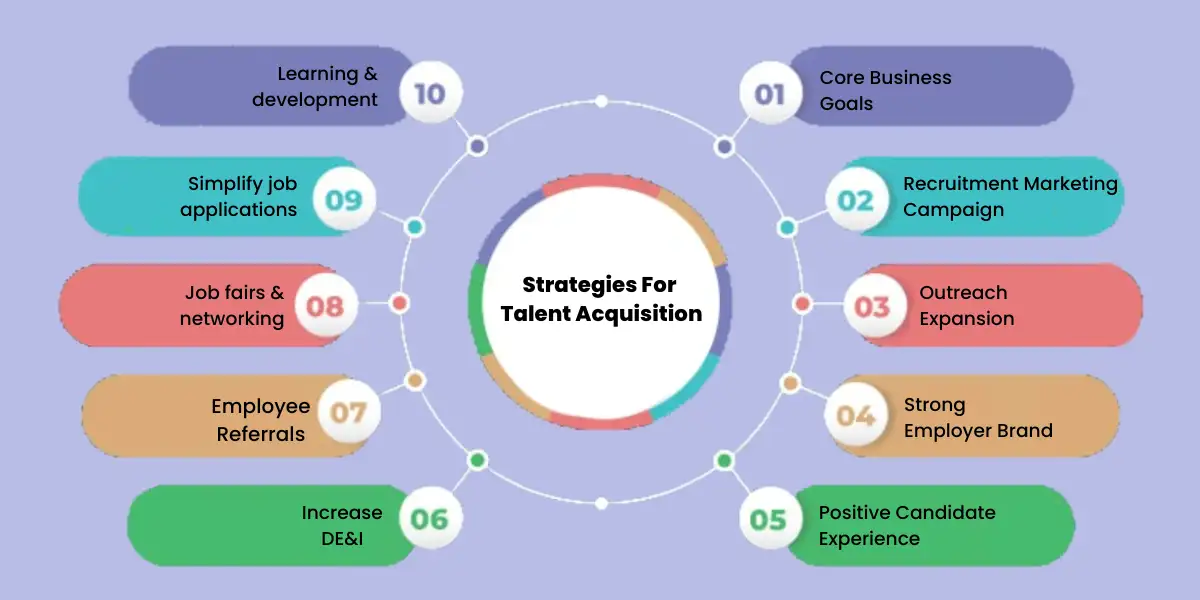
.webp.dat)
.webp.dat)
_(1).webp.dat)
.webp.dat)
.webp.dat)

